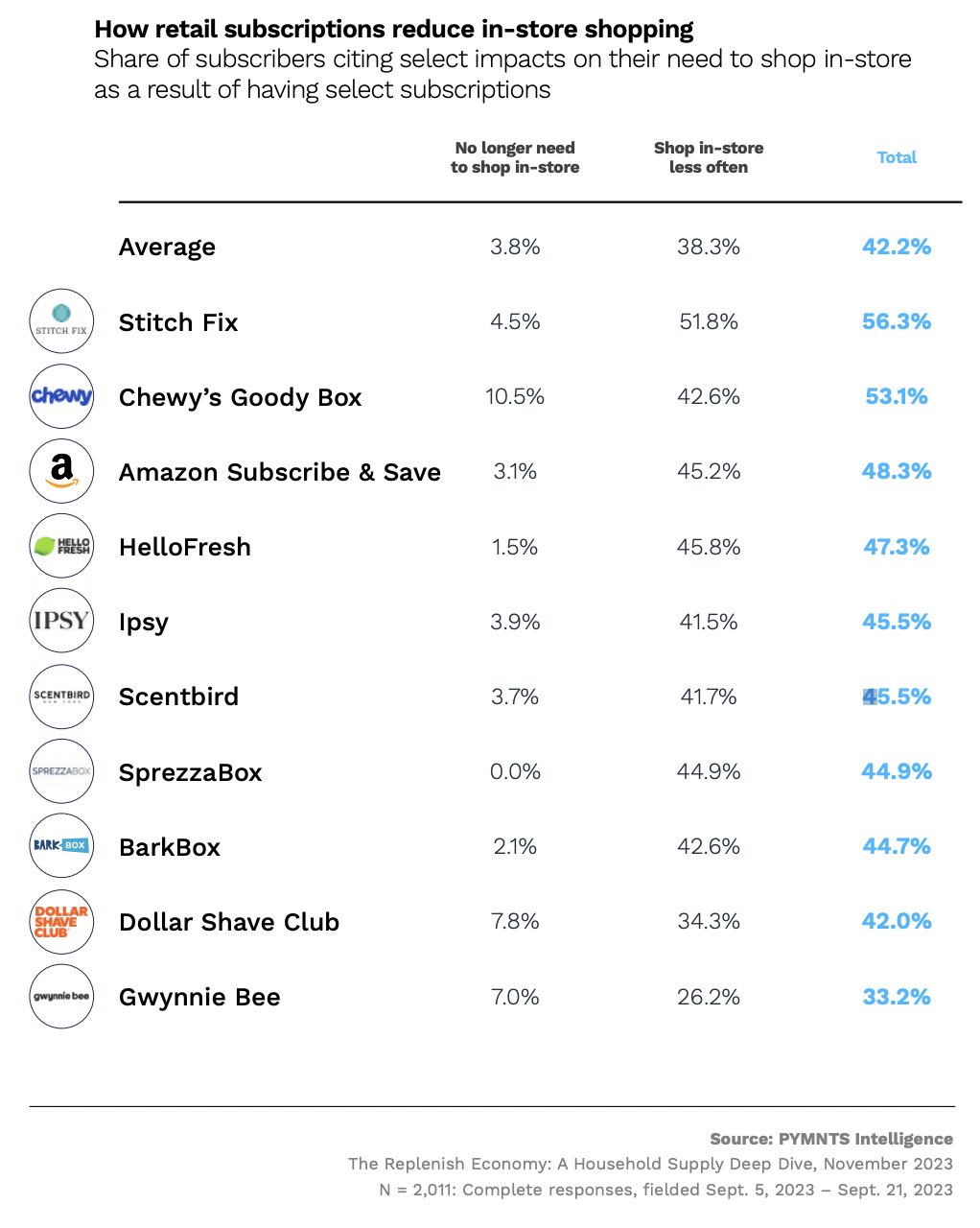Traditional brick-and-mortar pet supply stores may want to watch their backs, as digital native players keep shoppers at home with subscription options.

By the Numbers
The PYMNTS Intelligence report “The Replenish Economy: A Deep Dive of Household Supply” was drawn from a survey of more than 2,000 US consumers in September to better understand their subscription habits and how it affects their overall shopping habits.
The results revealed that of the 15% of retail subscribers participating in the Chewy’s Goody Box pet food and toy subscription program, 53% now shop in stores more often, with 11% of program participants no more shopping in stores for these items. .
The findings suggest that subscription services are changing traditional shopping patterns, leading to a decrease in traffic to physical retail locations. This trend indicates a shift towards more convenient and automated ways of procuring household goods, driven by the ease and predictability offered by subscription-based models.
Data in Context
More and more, eCommerce players are chasing this pet food opportunity. Last year, for example, meal kit giant HelloFresh announced its new dog food subscription, The Pets Table, promising “human-grade” food as part of the company’s push to become a leading “fully integrated food solutions group ” in the world.
Plus, according to a report from UK publication The Telegraph Monday (Feb. 19), British eGrocer Ocado is branching out into pet food, launching “fine dining” foods.
In September, UK direct-to-consumer brand Butternut Box, which sells dog food subscriptions, announced that it had raised $280 million British pounds (about $353 million) in its latest funding round, which with participation from investment firm General Atlantic and current investor L Catterton.
The rise of digitally native subscription services in the pet supply industry signals a shift in consumer behavior, challenging traditional brick-and-mortar stores as convenience and automation redefine retail landscape.


